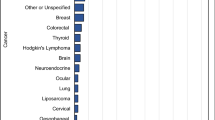Abstract
PLINY (AD 23-79) observed that in the second century BC the ancients painted their ships with native ceruse (white lead), that lead poisoning was known in his day and that the workers in lead products tied up their faces in loose bags lest they should inhale the pernicious dust1. In a survey of 228 men in nine shipbreaking yards in Scotland and NE England, McCallum2 focused attention on the health hazard resulting from burning lead-painted metal with a high temperature flame. He found 36% of the burners with a haemoglobin content less than 12.5 g per 100 ml of whole blood. In this operation, in which oxy-gas torches have been used at the work face, temperatures are in the region of 3,000–3,500° C. Iron melts at 1,535° C and is found in vapour form at 3,000° C. Lead melts at 328° C and boils at 1,740° C. This produces a risk of excessive exposure in compartments and between decks of ships, of which lead from paintwork is the principal risk3. In the breathing zone of the burner, with maximum concentrations of fume at torch level, may also be found zinc (zinc metal fume fever), copper from piping and cadmium from protective coatings4.
This is a preview of subscription content, access via your institution
Access options
Subscribe to this journal
Receive 51 print issues and online access
$199.00 per year
only $3.90 per issue
Buy this article
- Purchase on Springer Link
- Instant access to full article PDF
Prices may be subject to local taxes which are calculated during checkout
Similar content being viewed by others
References
Hunter, D., The Diseases of Occupations (English Universities Press, London, 1955).
McCallum, R. I., Sanderson, J. T., and Richards, A. E., Ann. occup. Hyg., 11, 101 (1968).
McCallum, R. I., Ann. occup. Hyg., 6, 55 (1963).
Evans, D. M., Br. med. J., 1, 173 (1960).
Windeyer, B. S., Report of a Committee Appointed to Inquire into Lead Poisonings at the RTZ Smelter at Avonmouth (HMSO, London, Cwmnd. 5042, 1972).
Lane, R. E., Br. med. J., 4, 501 (1968).
O'Riordan, M. L., and Evans, H. J., Nature, 247, 50 (1974).
Documentation of the Threshold Limit Values (American Conference of Governmental Industrial Hygienists, Cincinatti, 1971).
Rieke, F. E., Archs envir. Hlth, 19, 521 (1969).
Author information
Authors and Affiliations
Rights and permissions
About this article
Cite this article
TAYLOR, W., MOLYNEUX, M. & BLACKADDER, E. Lead Over-absorption in a Population of Oxy-gas Burners. Nature 247, 53–54 (1974). https://doi.org/10.1038/247053a0
Received:
Revised:
Issue Date:
DOI: https://doi.org/10.1038/247053a0
This article is cited by
Comments
By submitting a comment you agree to abide by our Terms and Community Guidelines. If you find something abusive or that does not comply with our terms or guidelines please flag it as inappropriate.



